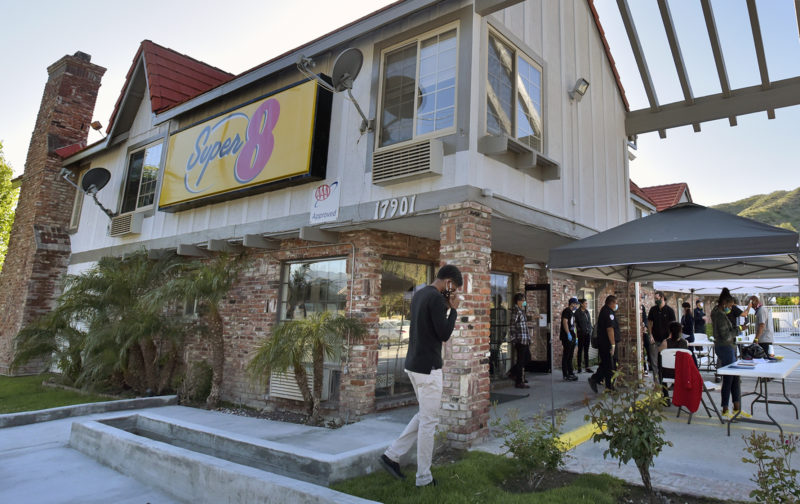Under Project Roomkey, an estimated 3,000 homeless people have moved from the streets and into hotels and motels during the COVID-19 pandemic. The goal for county homeless officials is now to keep them housed after the crisis.
On Tuesday, the L.A. County Board of Supervisors and the L.A. Homeless Services Authority, or LAHSA, discussed plans with short-, medium- and long-term strategies “to rapidly move the 15,000 most high-risk, high-acuity people experiencing homelessness into housing.”
“Coronavirus laid a sudden crisis on top of the long-standing catastrophe of homelessness,” Heidi Marston, interim executive director of LAHSA, said in a statement. “We’re planning a way through that allows us to take care of the most vulnerable and build capacity for the future.”
The L.A. Rehousing Recovery Strategy will require a “large-scale” effort to acquire and lease-up property and rely on emergency investments from the local, state and federal governments.
The plan’s five-key values include that everyone placed in emergency shelter during the pandemic will be placed “into some form of interim housing, rapid rehousing or permanent supportive housing,” to house the most vulnerable and to prevent the continued inflow of those who fall into homelessness. It also calls for zoning reforms, safety net enhancements and workforce training.
To transfer Project Roomkey occupants into appropriate housing resources, the following will be needed, according to LAHSA:
- Identifying and acquiring housing units and properties, and deploying holding fees.
- Increasing the ability to quickly match and assign available housing units to clients.
- Dedicated staff to help people find and move into available units.
- Inventory management system to enable active tracking of available resources.
- Buy and pre-assemble move-in kits at scale, so residents have basic supplies.
- Real-time awareness of housing units that will become available in the next seven days.
The plan builds on the progress of the coordinated city/county response to the coronavirus crisis, officials said. In the Santa Clarita Valley, for example, Bridge to Home has helped lead Project Roomkey efforts at a hotel in Canyon Country.
“Currently, there are 48 beds and room for 50 people at a local hotel in Canyon Country. We’ve been in about, probably, 80% (to) 85% capacity over time in that program. There are nights that we have indeed worked with about 110 people,” Mike Foley, Bridge to Home director, said in a previous interview.
Bridge to Home has also continued its efforts during the pandemic of helping individuals out of homelessness and into housing, most recently housing five individuals and families, according to Foley.








